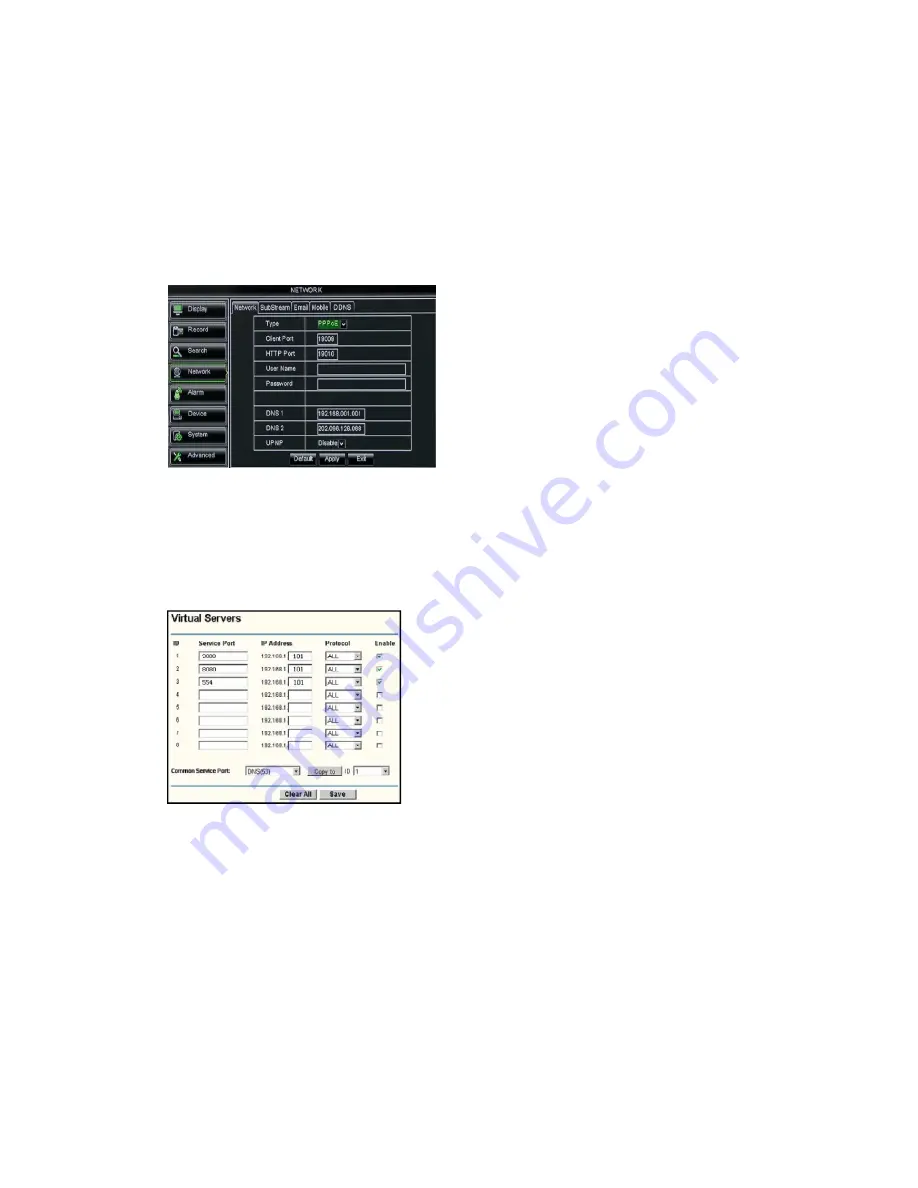
User Manual
18
4. Input a specified IP address
to [IP address] column;
5.
The Subnet Mask, gateway and DNS server should be consistent with your router’s
configurations.
6. Input DNS address. Please check router firstly. The setting should be consistent with router’s
7. Click [Apply] button
8. Now you could remotely visit the DVR via IP
http: // public net IP: web port (such as: 8080)
http: //intranet IP: web port (such as: 8080 - only use for Intranet)
Picture 5-33
5.3.4.2
Router’s Port Forwarding
Port forwarding is required when you want to access the DVR connected to the router
from outside of the router’s network.
If PPPoE is selected, port forwarding is not required.
Picture 5-34
Friendly Reminder:
The router’s port forwarding interface may be different, however,
when entering into virtual server, user will always need forward port (range: 1025~65535)
of router to IP address of DVR allocated or automatically captured, and select [All] or [Both]
in corresponding protocol column and save the above setting.
Above steps may differ from the router device depending on the manufacturer.
5.3.4.3
Sub stream
Go to [Main menu
Network
Sub Stream] to enter into the interface shown as Picture 5-35
When selecting PPPoE form the Type, user can
input user name and password provided by ISP
and set Media and Web port. And now you can
visit your remote DVR by using the IP address
captured after registering a domain name and
web port and connect to your DVR via public
network.
1. Input router’s IP address from IE-based browser
to open the Router configuration interface shown as
Picture 5-36;
2. Click [Transmittal rule] option to take you to the
port forwarding instructions for your router;
3. The DVR IP address for the intranet should be
<192.168.1.101>, you should forward server port and
web port to this IP address respectively.
4. Now user can visit the DVR remotely.






























